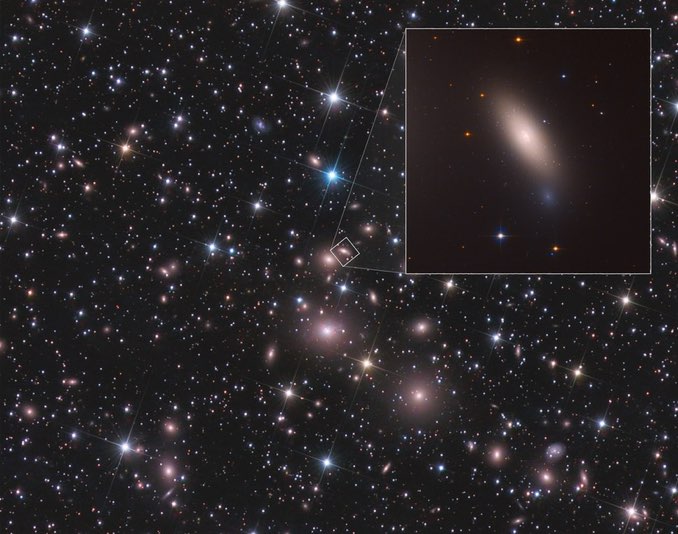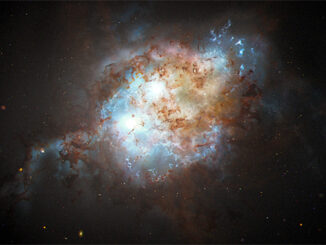
Astronomers using the Hubble Space Telescope have found a so-called “relic galaxy” in the Milky Way’s backyard, the closest of these rare star swarms yet discovered.
Galaxy NGC 1277 is located near the centre of the Perseus cluster of more than 1,000 galaxies some 240 million light years away, but it is moving so fast – 3.2 million kilometres per hour (2 million mph) – that it cannot merge with other galaxies or suck in the gas needed to fuel star formation. It is just a quarter the size of the Milky Way but harbours twice as many stars.
Relic galaxies like NGC 1277 formed in the early universe, churning out stars a thousand times faster than the Milky Way today. But NGC 1277 abruptly ceased star formation when it apparently ran out of external fuel and has remained quiescent for the past 10 billion years or so. A tell-tale clue is the lack of bluish, metal-poor globular clusters, which typically form later in a galaxy’s life as surrounding stars and galaxies are pulled in
Roughly one in 1,000 massive galaxies are thought to be relics, and Hubble has seen such “red and dead” galaxies before. But those were so distant they appeared as little more than reddish dots in the space telescope’s images. NGC 1277, however, is close enough to study in detail.
Ignacio Trujillo, of the Instituto de Astrofísica de Canarias at the University of La Laguna, Spain, said the galaxy will help astronomers “probe the conditions of the early universe.”



